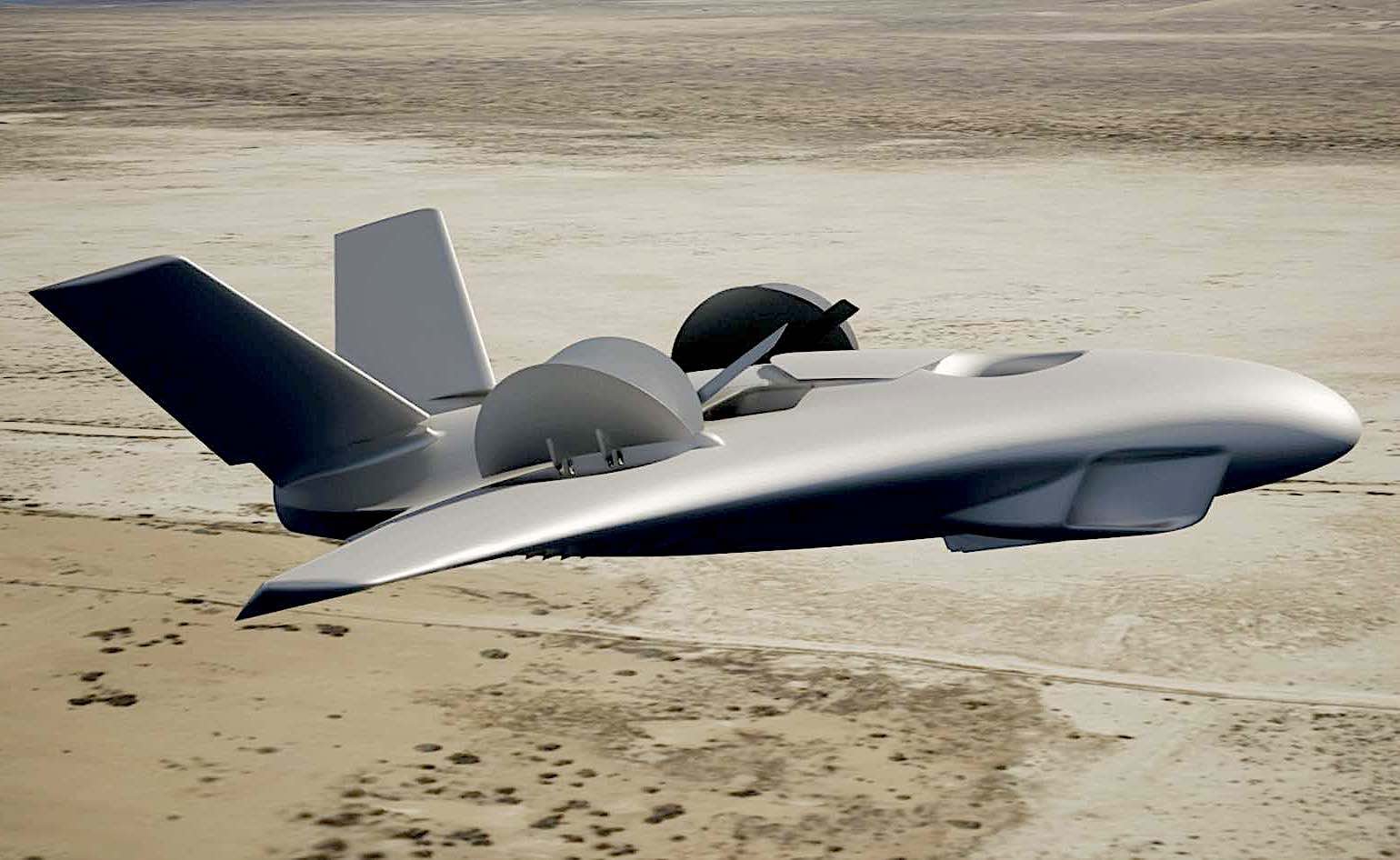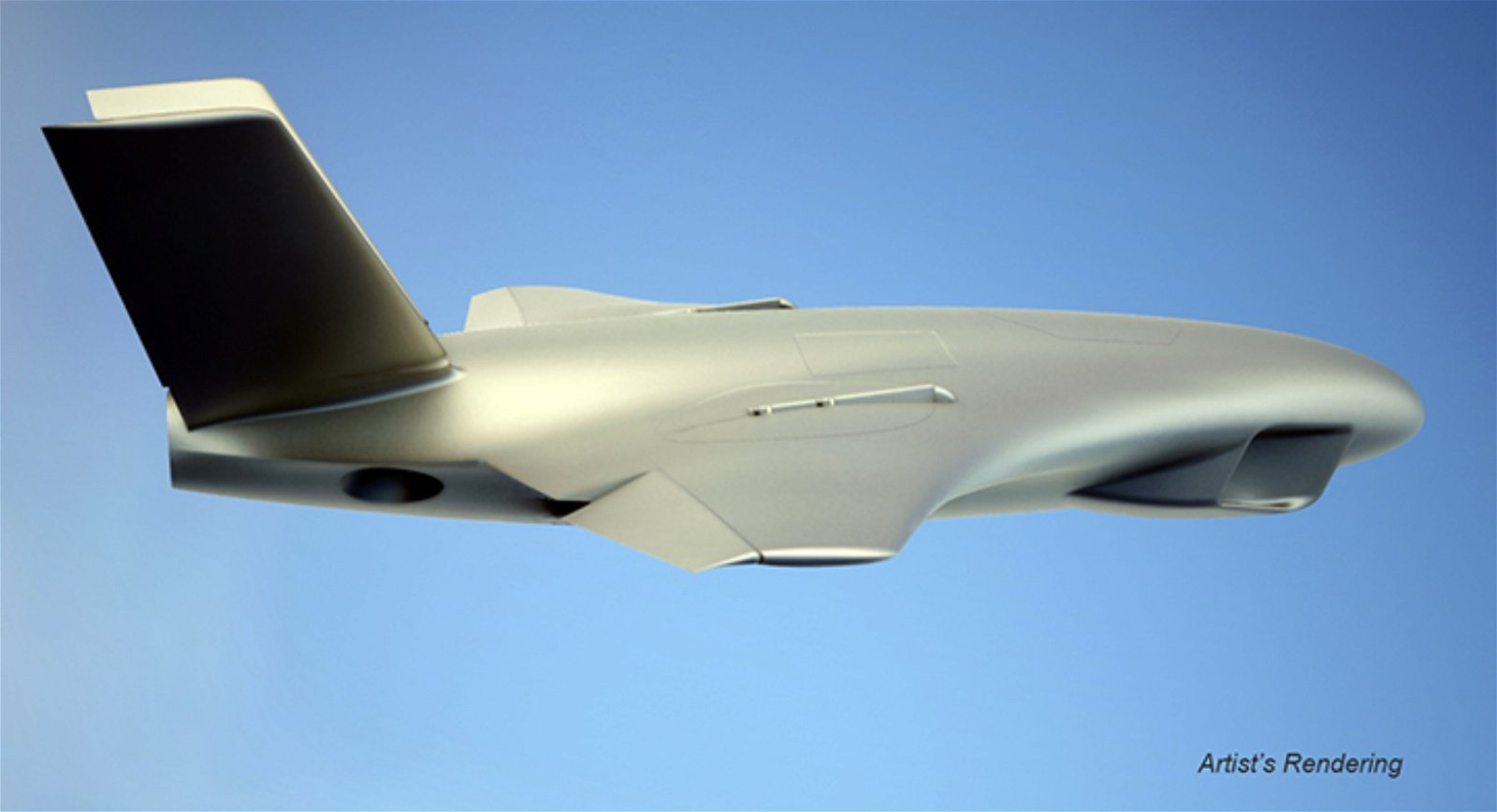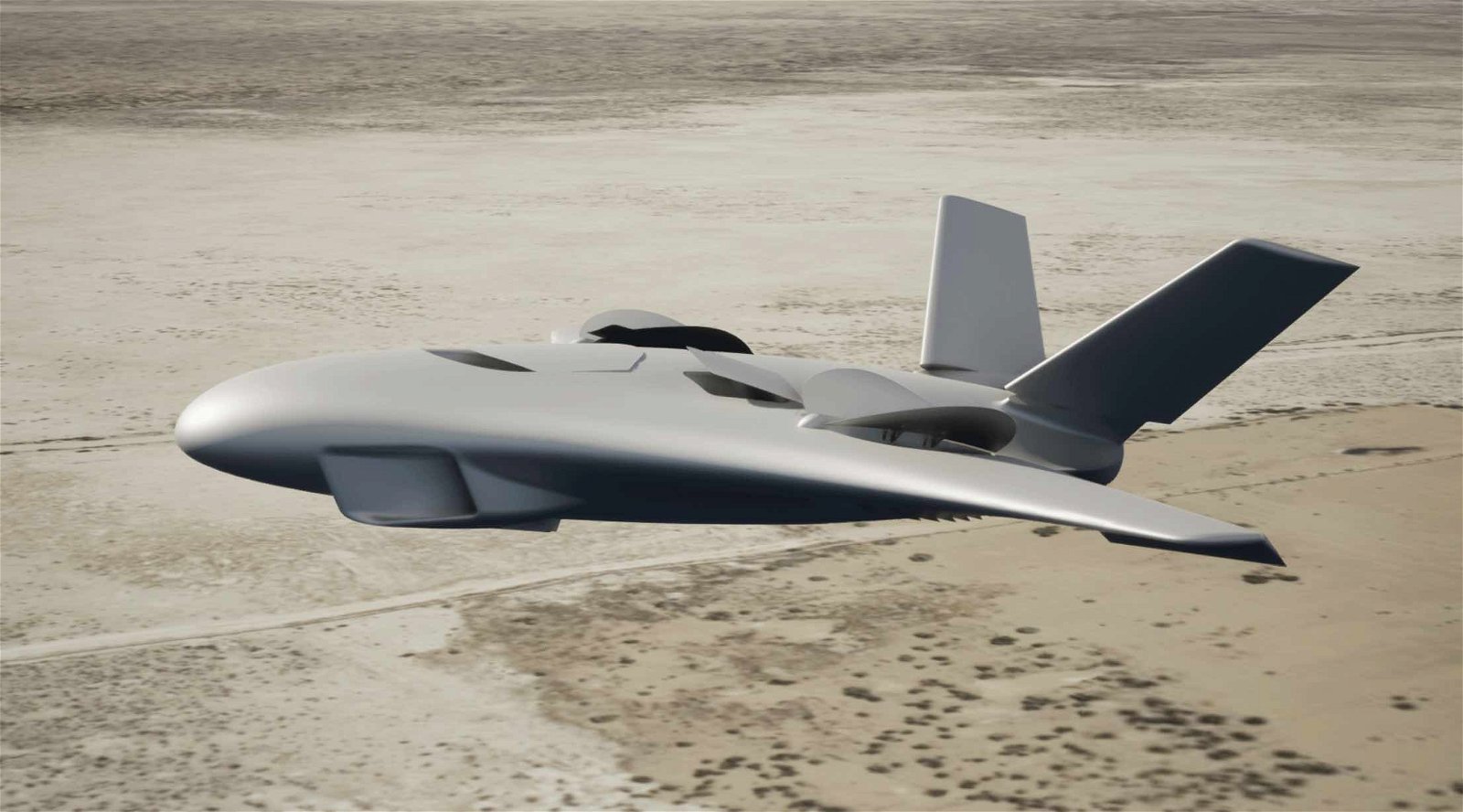An experimental high-speed, vertical-lift X-plane has a new look, as revealed in new conceptual images as the aircraft moves toward its preliminary design phase.
Developed by Aurora Flight Sciences, a Boeing company, the Aurora X-plane was recently revealed in a series of new conceptual images depicting the aircraft during test flights over Dugway Proving Ground in Utah. The aircraft is currently being developed for the Defense Advanced Research Projects Agency (DARPA) under its Speed and Runway Independent Technologies (SPRINT) program.
Under the SPRINT program, Aurora has been tasked with delivering DARPA an aircraft capable of demonstrating a range of key technological capabilities. The agency says this will “enable a transformational combination of aircraft speed and runway independence.”
Aurora’s demonstrator will be a fan-in-wing design, which achieves low-drag flight thanks to an innovative wing body platform that blends the best capabilities in current vertical take-off and landing (VTOL) technology with high speed.
Aurora’s aircraft will help advance the SPRINT program’s objectives of attaining “game-changing capability for air mobility and Special Operations Forces (SOF) missions,” the company said in a recent statement on its website.
What the New Images Reveal
In Aurora’s latest artist concept images, the experimental aircraft’s fan-in-wing (FIW) design is revealed. It features a trio of lift fans and a more streamlined composite exterior.
“The choice of three lift fans reflects the team’s strategy to simplify the demonstrator and streamline its path to flight test,” the company says, with the fans designed to be scaled to provide additional fans as may be needed for future aircraft based on the new design.


Previously, Aurora has already demonstrated the use of fan systems in the development of its Excalibur Unmanned Aerial System (UAS), which employs jet power to drive three electric “louvered lift” fans for vertical takeoff and landing. On the new X-plane, the fan configurations will be retractable within the wings during primary flight mode operations.
Although the current X-plane design is an uncrewed demonstrator, Aurora says this offers advantages during the testing phase by reducing risks while allowing the FIW technologies it demonstrates to be carried over and scaled to aircraft designs featuring traditional crewed configurations.
Setting the Pace for ‘SPRINT’
Additionally, the new images reveal elements of the aircraft that will serve as crucial components for meeting the SPRINT program’s objectives. These include a body capable of 450-knot cruise speeds, short take-off and vertical landing (STOVL) capabilities, and seamless transitions between vertical and horizontal flight modes.


Larry Wirsing, vice president of aircraft development at Aurora Flight Sciences, said that the company’s work with DARPA on its SPRINT program offers “an exciting opportunity to continue our history of advancing technology demonstrator programs that enable new capabilities for the U.S. military.”
According to current timelines, Aurora and Boeing anticipate their primary design review will likely conclude within the next 12 months, after which the X-plane’s first official flight will take place in approximately 36 months.
Micah Hanks is the Editor-in-Chief and Co-Founder of The Debrief. He can be reached by email at micah@thedebrief.org. Follow his work at micahhanks.com and on X: @MicahHanks.

